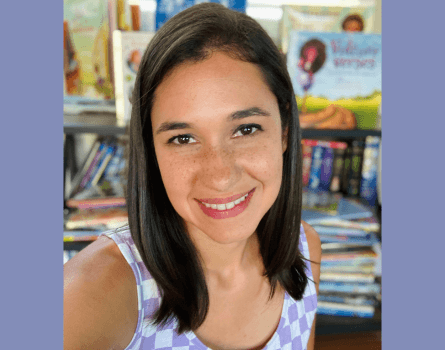Creator Spotlight with Children’s Book Illustrator Lauren Gallegos

This week we’d like to introduce you to children’s book illustrator, Lauren Gallegos. Lauren has illustrated over 30 books ranging from board books to historical fiction. After reading her spotlight blog, we encourage you to also follow her on Facebook, Instagram, and X.
What was the inspiration behind becoming a children’s book author? What do you enjoy most about the creative process?
Like most kids, I enjoyed making art, but it wasn’t until the end of high school that I started thinking of art as a possible career path. Before, I had never really thought that being an artist could be something you could make a living at. I went through college with that pursuit, but I didn’t have a clear goal until I took a Children’s Book Illustration class. Once I discovered that world, that was it for me. I knew I wanted to make narrative art and tell visual stories for kids. The books I read as a child were a huge inspiration to me as I got started. And as I grew, I became more familiar with current children’s illustrators that I loved. I love being able to create new and interesting worlds that you can escape into. I can imagine places that don’t exist, and make them real. And there is nothing more powerful than a story that brings someone hope. That is what I want to help bring to children through my art.
Can you talk through your creative process? How long does it take? Does everything you produce make money?
Either for client work, or personal work, it usually starts with some kind of story, either a finished manuscript, or some other narrative (a poem, a song, etc) any piece of text that sparks my imagination. Creating a children’s book involves everything from character design, environment design, narrative and sequential storytelling to thumbnail sketches, refined sketches, color sketches, and final art. It’s a huge process all crammed into 32 pages. Creating one children’s book can take anywhere between six months to one year. It’s a commitment and an investment, and so many people underestimate how much is involved in the process. Of course, it is most preferred to be hired to create art for a manuscript, in which case, you are paid for all the work you do. But there are certainly times when I am making art that I have not been hired for. To be hired, you have to have a strong, ever-changing portfolio, and not all paid work is something I want in my portfolio. So, I am constantly trying to make new work so that I will continue to get new jobs. It’s all about staying current and relevant in the children’s market, and sometimes that means making something for nothing in the hopes that it will produce interest from a publisher to eventually hire me.
What do you think is the biggest misconception about your line of work?
I think most people believe that making art for a children’s book takes a couple of weeks at most. They have no idea what amount of effort goes into every single piece of art, and not only that one piece, but an entire book full of art, which can be 16 images or more, And not only that, they all have to work together as one cohesive story. The pieces have to work together, but not all look the same. And you mostly have the same characters on every page, and they have to look consistent throughout the entire book. I think people think of kids’ books as a few fun, cute pictures. But each book is an entire body of work. Things like this take a lot of time.
When did you first become aware of copyright, and why?
I first became aware of copyright and protecting my work in college. This is going to make me sound SO OLD, but social media was still very new then, so we were encouraged to put our work on our own website or blog. At the time, sharing work on the internet was scary and who knows what was being stolen, so my professors taught us how to create our own watermarks to plaster across our work. They looked horrendous, but it felt like the most secure thing you could do at the time, so I did it. There was nothing official about it, but as a budding college-age artist with no money, it felt like enough.
What is the best piece of advice that you would give other creators in your field about copyright and how to protect themselves?
The illustrator will usually retain the copyright to their illustrations in the Publisher’s contract. But there are still plenty of publishers that only do “Work-for-Hire” contracts, which means the publisher holds the rights to your work. This is a decision an Illustrator has to make. If they are not comfortable, sometimes contracts can be negotiated differently, but that doesn’t always work. There are plenty of perfectly respectable Illustrators who will give up the rights to their work on occasion, usually for a job they aren’t completely tied to or in love with. Sometimes we all just need to work for money, and that’s fine. But there are stories of illustrators who do a Work-for-Hire project and, BAM! Now it’s being picked up to become a movie! Oh wait, but now the artist has zero say in how their work is used, if it’s even used at all. Work-for-Hire doesn’t have to be a deal breaker, but if you can negotiate the rights, definitely try to do so! And to protect your work with peace of mind, register them with the U.S. Copyright Office.
If you aren’t already a member of the Copyright Alliance, you can join today by completing our Individual Creator Members membership form! Members gain access to monthly newsletters, educational webinars, and so much more — all for free!

